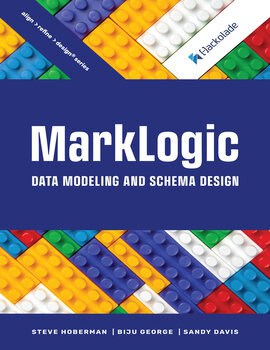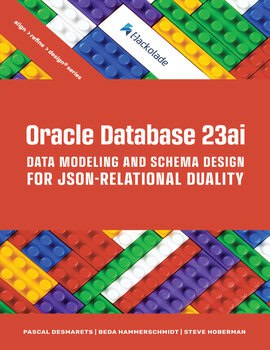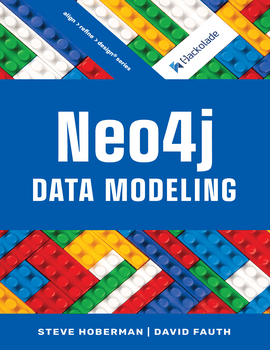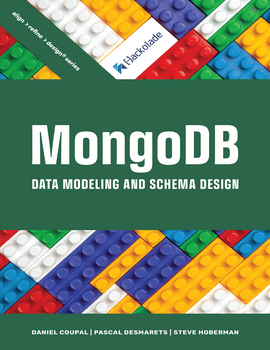MarkLogic Data Modeling and Schema Design
The Align > Refine > Design Series, by Steve Hoberman and industry experts
The Align > Refine > Design series covers conceptual, logical, and physical data modeling (schema design and patterns) for leading technologies, combining proven data modeling practices with database-specific features to produce better applications.
Topics
Chapter 1: About Database Models
Relational
Key-value
Wide column
Graph
RDF graph
Property graph
Document
A note about terminology
Data types
Chapter 2: About MarkLogic
Multi-model features of MarkLogic
Does data modeling matter in MarkLogic?
Storage model
Document URI
Document organization
Directories
Collections
Chapter 3: The JSON Document Model
Polymorphism
Fields with multiple data types
Multiple document types in a JSON collection
Schema evolution and versioning
Chapter 4: About Data Models
Data model explanation
Three model characteristics
Precise
Minimal
Visuals
Three model components
Entities
Relationships
Attributes and keys
Three model levels
Business terms (Align)
Logical (Refine)
Domain-Driven Data Modeling
Physical (Design)
Three model perspectives
Relational
Dimensional
Query
Chapter 5: Align
Purpose
Our animal shelter
Approach
Step 1: Ask the six strategic questions
Step 2: Identify and define the terms
Step 3: Capture the relationships
Step 4: Determine the visual
Step 5: Review and confirm
Three tips
Three takeaways
Chapter 6: Refine
Purpose
Approach
Step 1: Apply elicitation techniques
Measure Connections
Step 2: Analyze Usage Patterns
Step 3: Refine Queries
Three tips
Three takeaways
Chapter 7: Design
Purpose
Approach
Step 1: Select database(s)
Step 2: Add secret sauce
MarkLogic schema design principles
Embedding versus referencing
Embedding
Referencing
Rules for embedding and referencing
Schema design patterns
The Approximation Pattern
The Attribute Pattern
The Bucket Pattern
The Computed Pattern
The Document Versioning Pattern
The Envelope Pattern
The Extended Reference Pattern
The Polymorphic Pattern
The Schema Versioning Pattern
The Subset Pattern
The Semantic Graph Pattern
Primary keys
Monitoring schema evolution
Schema migration
Step 3: Optimize
Indexing
Generation of test data
Four tips
Three takeaways
Read MarkLogic Data Modeling and Schema Design if you are a data professional who needs to expand your modeling skills to include MarkLogic or a technologist who knows MarkLogic but needs to grow your schema design skills.
We covers the three modeling characteristics of precise, minimal, and visual; the three model components of entities, relationships, and attributes (including keys); the three model levels of conceptual (align), logical (refine), and physical (design); and the three modeling perspectives of relational, dimensional, and query. Align is about agreeing on the common business vocabulary so everyone is aligned on terminology and general initiative scope. Refine is about capturing the business requirements. That is, refining our knowledge of the initiative to focus on what is essential. Design is about the technical requirements. That is, designing to accommodate our model’s unique software and hardware needs.
Align, Refine, and Design—that’s the approach followed in this book and reinforced through an animal shelter case study.
If you are interested in learning how to build multiple database solutions, read all the books in the Align > Refine > Design series. Since each book uses the same template, you can quickly skill up on additional database technologies.
About Steve
Steve Hoberman is a world-recognized innovator and thought-leader in the field of data modeling. He has worked as a business intelligence and data management practitioner and trainer since 1990. He is the author of Data Modelers Workbench and Data Modeling Made Simple, the founder of the Design Challenges group and the inventor of the Data Model Scorecard®.
About Sandy
Sandy Davis is an Enterprise Data Architect at a major Class 1 railroad in the United States. Sandy has been working with Relational (SQL) and NoSQL databases in the roles of developer, database administrator, and data modeler/designer since 1989. Sandy has been leading the deployment and adoption of MarkLogic since 2018. Several mission-critical railroad operational applications use MarkLogic.
About Biju
Biju George is a seasoned professional with over 25 years of progressive experience catering to the critical technology needs of enterprise customers across various industries such as insurance, healthcare, finance, and logistics. As a Sales and Solutions Engineer, Biju specializes in working with large enterprises, leveraging his expertise to resolve complex data problems using MarkLogic, the leading enterprise-hardened schema-agnostic database platform in the global market. Biju has been working with MarkLogic since 2018.
Faculty may request complimentary digital desk copies
Please complete all fields.




